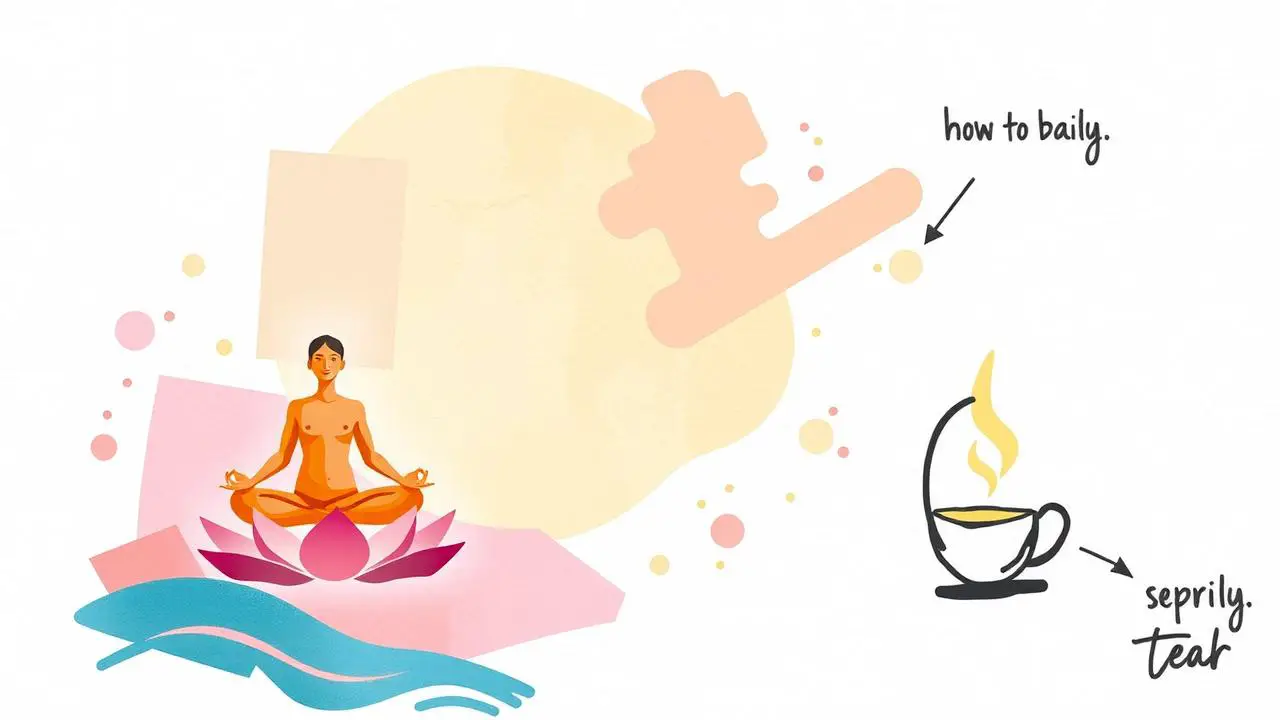The intricate relationship between social rejection and physical pain has long intrigued researchers, prompting them to delve deeper into the mechanisms underlying this compelling connection.
Recent studies, such as the one conducted by Kross and colleagues, have brought to light the astonishing parallels in the neural processing of social rejection and physical pain.
As we unravel the implications of these findings, it becomes evident that the impact of social rejection extends beyond emotional distress, potentially encroaching upon physical well-being.

This revelation raises thought-provoking questions about the intricate interplay between our social experiences and physical sensations, prompting a reevaluation of the ways in which we perceive and address the effects of social rejection on human health and well-being.
Key Takeaways
- Social rejection can elicit a similar level of distress as physical pain.
- The same areas in the brain are activated during moments of intense social rejection and physical pain.
- Social pain and physical pain are processed in overlapping neural pathways.
- Understanding the similarities between social rejection and physical pain can help in developing strategies to cope with rejection.
Research Findings on Social Rejection and Physical Pain
The study titled ‘Social Rejection Shares Somatosensory Representations With Physical Pain,’ published in Proceedings of the National Academy of Sciences, presents compelling evidence that social rejection and physical pain share neural pathways and elicit similar distress in individuals.
Understanding the neurobiology of social pain is crucial, as the emotional toll of rejection can be profound. The study, conducted with 40 volunteers who had recently experienced intense rejection, found that the same brain areas were activated during experiences of social rejection and physical pain. This suggests that social rejection can evoke distress akin to physical pain.
The implications of this research are significant, highlighting the importance of emotional well-being and the negative impact rejection can have on mental and physical health. These findings underscore the need for interventions and therapies to support individuals dealing with rejection, ultimately contributing to a safer and more empathetic society.

Experimental Procedure
Exploring the experimental procedure employed in the study titled ‘Social Rejection Shares Somatosensory Representations With Physical Pain,’ sheds light on the meticulous approach taken to compare neural responses to social rejection and physical pain in individuals who had recently experienced intense rejection.
Experimental Procedure
- Participants underwent thermal stimulation on their left forearms to simulate the experience of spilling hot coffee.
- Brain activity was monitored during the thermal stimulation to identify the areas that were activated.
- The participants also looked at a photograph of a friend and thought about a recent positive experience they had together.
- The purpose of the experiment was to compare the brain responses to rejection and physical pain.
This experiment provides valuable insight into the role of brain activity in social rejection and the impact of rejection on mental health. Understanding these aspects is crucial for developing strategies to cope with rejection and promoting emotional well-being.
Similarities Between Social Rejection and Physical Pain
The striking parallel in neural responses to social rejection and physical pain uncovered by the study sheds crucial light on the intertwined nature of emotional distress and physical suffering.
The findings suggest that social rejection can elicit a similar level of distress as physical pain, highlighting the deep psychological implications of rejection.

Understanding the similarities between social rejection and physical pain is essential for developing effective coping strategies. It emphasizes the need to prioritize emotional well-being and social connections in individuals’ lives.
The research provides scientific evidence for the emotional impact of rejection on individuals, emphasizing the negative impact that rejection can have on mental and physical health.
This understanding can contribute to the development of interventions and therapies for individuals dealing with rejection, ultimately offering hope for alleviating the emotional burden caused by rejection.
Implications of the Research
Building on the profound insights into the intertwined nature of emotional distress and physical suffering revealed by the study, it is imperative to navigate the nuanced implications of these findings.

Implications of the Research:
- Impact on Mental Health: The study underscores the detrimental impact of social rejection on mental well-being, highlighting the need for increased support and understanding of individuals experiencing rejection.
- Coping Strategies: Understanding the similarities between social rejection and physical pain can inform the development of effective coping strategies for individuals dealing with rejection, promoting resilience and emotional well-being.
- Intervention Development: The findings can contribute to the development of targeted interventions and therapies aimed at mitigating the negative effects of social rejection on mental health.
- Further Research: Continued research in this area is crucial for gaining deeper insights into the mechanisms underlying social pain and for identifying additional effective coping mechanisms.
These implications emphasize the urgency of addressing social rejection and its impact on individuals’ mental health.
Author Information
Line Goguen-Hughes, a seasoned writer and editor, and former assistant editor at Mindful, authored the article ‘It’s Official: Rejection Really Hurts,’ providing a comprehensive review of the research findings on the relationship between social rejection and physical pain.
Goguen-Hughes delved into the potential impact of rejection on long-term well-being and highlighted the role of social support in coping with rejection. The article emphasized the importance of emotional well-being and social connections in individuals’ lives, shedding light on the negative impact that rejection can have on mental and physical health.
Goguen-Hughes’ insightful analysis and empathetic approach underscored the need for interventions and therapies to help individuals dealing with rejection. By synthesizing the research findings, the author contributed to the understanding of the emotional toll of rejection and the development of strategies to alleviate its impact.

Study Publication and Lead Author
Published in Proceedings of the National Academy of Sciences, the study titled ‘Social Rejection Shares Somatosensory Representations With Physical Pain’ was conducted under the guidance of lead author Ethan F. Kross, an assistant professor of psychology at the University of Michigan.
Study Implications
- The research findings highlight the emotional impact of rejection, emphasizing the negative effect on mental and physical health.
- Understanding the similarities between social rejection and physical pain can aid in developing coping strategies for rejection.
Future Research Directions
- Further research in this area can provide insights into the mechanisms underlying social pain.
- The study contributes to the growing body of research on the neurobiology of emotions and social interactions, paving the way for future investigations.
This study sheds light on the profound implications of social rejection and provides a foundation for future research to delve deeper into this complex interplay between emotional and physical pain.

Neural Pathways and Emotional Distress
The study’s findings on the shared neural pathways for social rejection and physical pain underscore the intricate interplay between emotional distress and somatosensory representations, opening avenues for deeper exploration of the underlying mechanisms.
Understanding the role of empathy in neural pathways can provide insights into the emotional impact of rejection.
Coping strategies play a crucial role in managing emotional distress associated with social rejection and physical pain.
Recognizing the similarities in neural pathways for emotional and physical pain can lead to the development of more effective coping mechanisms.

This understanding emphasizes the need for a supportive and empathetic environment to help individuals deal with rejection.
Further exploration of these neural pathways can contribute to the development of interventions aimed at alleviating emotional distress and promoting mental well-being.
Emotional Well-being and Rejection
The profound impact of social rejection on individuals’ emotional well-being necessitates a deeper understanding of its effects and the development of effective coping strategies.
Impact on Mental Health:
- Social rejection can lead to feelings of worthlessness, anxiety, and depression, significantly impacting mental health.
- It can trigger a sense of isolation, leading to a decline in overall emotional well-being.
- Repeated experiences of rejection may contribute to long-term emotional distress and psychological trauma.
- Social rejection can disrupt one’s sense of belonging and connectedness, affecting self-esteem and confidence.
Understanding the impact of rejection on mental health is crucial for developing effective coping strategies to mitigate its adverse effects and promote emotional well-being.

In light of these challenges, it is essential to explore and implement strategies that bolster resilience, foster healthy social connections, and nurture self-compassion to enhance emotional well-being in the face of rejection.
Frequently Asked Questions
How Do the Findings of This Study Impact the Understanding and Treatment of Mental Health Conditions Related to Social Rejection?
Understanding the study’s implications on mental health conditions related to social rejection can enhance treatment approaches. It emphasizes the interconnectedness of emotional and physical pain, necessitating empathetic interventions that prioritize interpersonal relationships and emotional well-being.
Are There Any Ethical Considerations That Were Taken Into Account in Conducting the Thermal Stimulation Experiments on the Participants?
The ethical considerations in conducting the thermal stimulation experiments involved ensuring participant safety, obtaining informed consent, and minimizing potential distress. Prioritizing ethical conduct was crucial in safeguarding the well-being of the participants during the study.
What Are the Potential Long-Term Effects of Experiencing Frequent Social Rejection on an Individual’s Physical Health?
The potential long-term effects of frequent social rejection on an individual’s physical health may include increased susceptibility to mental health conditions, chronic stress, and weakened immune system. Social pain can impact overall well-being and necessitates empathy, understanding, and support.

How Do the Similarities Between Social Rejection and Physical Pain in the Brain Impact Our Understanding of Empathy and Interpersonal Relationships?
The similarities between social rejection and physical pain in the brain underscore the deep impact of rejection on individuals, providing insight into empathy and interpersonal relationships. Understanding these connections can inform interventions and support mechanisms for emotional well-being.
Are There Any Potential Cultural or Societal Factors That Could Influence the Experience of Social Rejection and Its Impact on Physical Pain?
Cultural influences and societal factors can impact the experience of social rejection and its effect on physical pain. Understanding these nuances is crucial for developing empathetic interventions and building resilient interpersonal relationships.
Conclusion
In light of the findings on the shared neural representations of social rejection and physical pain, it is evident that the impact of rejection goes beyond emotional distress.
The implications of this research are far-reaching, with potential to inform interventions aimed at alleviating the distress caused by rejection.

As further studies delve into the intricate interplay between social and physical pain, the potential for developing effective strategies to mitigate the impact of rejection on overall well-being becomes increasingly promising.
Frequently Asked Questions
How do I incorporate mindfulness into my everyday life?
You can incorporate mindfulness into your daily life by being fully present and engaged in your routine activities. For example, when brushing your teeth, focus on the sensation, the taste of the toothpaste, the feeling of the brush against your teeth. This kind of routine mindfulness practice can more easily fit into a busy schedule.
How long should I practice mindfulness each day?
The length of your mindfulness practice can vary depending on your lifestyle and schedule. Some people aim for at least 10 minutes a day, while others might engage in mindfulness activities for an hour or more. There’s no right or wrong duration, but consistency is essential.
Will practicing mindfulness make me more open to negative thoughts?
Mindfulness can expose us to thoughts we’ve been trying to avoid, both positive and negative. The key is to approach each thought without judgment and accept its presence. This approach can increase your emotional resilience over time, making it easier to manage negative thoughts and feelings when they arise.
Does mindfulness require meditation?
While meditation is one way to practice mindfulness, it is not the only way. Any activity that encourages you to focus your attention on the present moment without passing judgment can be a form of mindfulness practice.
Does mindfulness have any physical benefits?
Yes. Several studies show that consistent mindfulness practice can lead to physical benefits such as improved sleep, lower blood pressure, and decreased symptoms in chronic diseases like diabetes, heart disease, and cancer. The relaxation that comes with mindfulness can also boost the immune system.
Can I practice mindfulness while engaged in physical activity?
Absolutely. Physical activities like walking, running, or yoga can be perfect opportunities for mindfulness practice. These activities can help you focus your attention on your body movements, sensations, or your breathing, helping you stay present in the moment.
Can mindfulness help with depression?
Several studies suggest that practicing mindfulness can help individuals with depression by reducing their symptoms and preventing relapse. However, mindfulness is not a substitute for professional treatment. If you’re dealing with depression, it’s important to consult a mental health professional.
Statistics
- A report in the journal ‘Psychotherapy and Psychosomatics’ demonstrated that mindfulness can lead to a 15% improvement in sleep quality.
- According to the American Psychological Association, numerous studies have highlighted an improved general day-to-day experience in 70% of individuals who practice mindfulness daily.
- The Journal of Alternative and Complementary Medicine reported that mindfulness practitioners experienced 20% fewer episodes of acute respiratory infection compared to non-practitioners.
- A research paper published in the journal ‘Mindfulness’ reports a significant reduction in workplace stress for employees who participated in an 8-week mindfulness-based stress reduction program.
- According to the International Journal of Neuropsychopharmacology, a study found a 21% increase in the volume of gray matter in the brains of individuals who practiced regular mindfulness.
- The National Institutes of Health reported that mindfulness training led to a 32% decrease in blood pressure in patients with prehypertension.
- As reported in the Journal of Adolescent Health, teenagers practicing mindfulness showed a 60% decrease in anxiety levels.
- A report published in the Journal of Consulting and Clinical Psychology pointed out a 44% decrease in suicidal thoughts in adults diagnosed with depression who incorporated mindfulness into their treatment.
- A randomized study in the Journal ‘Pain’ found that people with chronic pain following an 8-week mindfulness program experienced a 57% reduction in their discomfort.
- A research study in the Journal of Behavioral Medicine mentioned that practicing mindfulness for 8 weeks resulted in a 14% decrease in the perceived stress of study participants.
External Links
- Headspace offers guided meditations and mindfulness techniques to help start or deepen your practice.
- Center for Healthy Minds conducts rigorous research into mindfulness and well-being.
- Presence App is a mindfulness-based mobile application that helps track and improve daily well-being.
- Mindfulness Exercises offers free mindfulness courses, exercises, and meditations.
- Midwest Alliance for Mindfulness is an organization offering resources, classes, and community connections around mindfulness.
- MBCT offers evidence-based resources related to Mindfulness-Based Cognitive Therapy (MBCT).
- Palouse Mindfulness offers a free Mindfulness-Based Stress Reduction (MBSR) course online.
- Mindfulness Insight offers literature and resources for practicing and understanding mindfulness.
- Mindful.org is a great resource for mindfulness practices, offering articles, events, and podcasts on the topic.
- Daniel Goleman is a psychologist and science journalist known for his works on emotional intelligence and mindfulness.
How To
How to Practice Mindfulness at Work
Concentrating on the present moment can help reduce stress and improve productivity at work. Start your day practicing mindfulness before getting to the office. While at work, take short breaks to meditate or breathe mindfully. Pay close attention during meetings and listen actively to colleagues. These mindfulness practices can enhance focus and improve work experiences.




